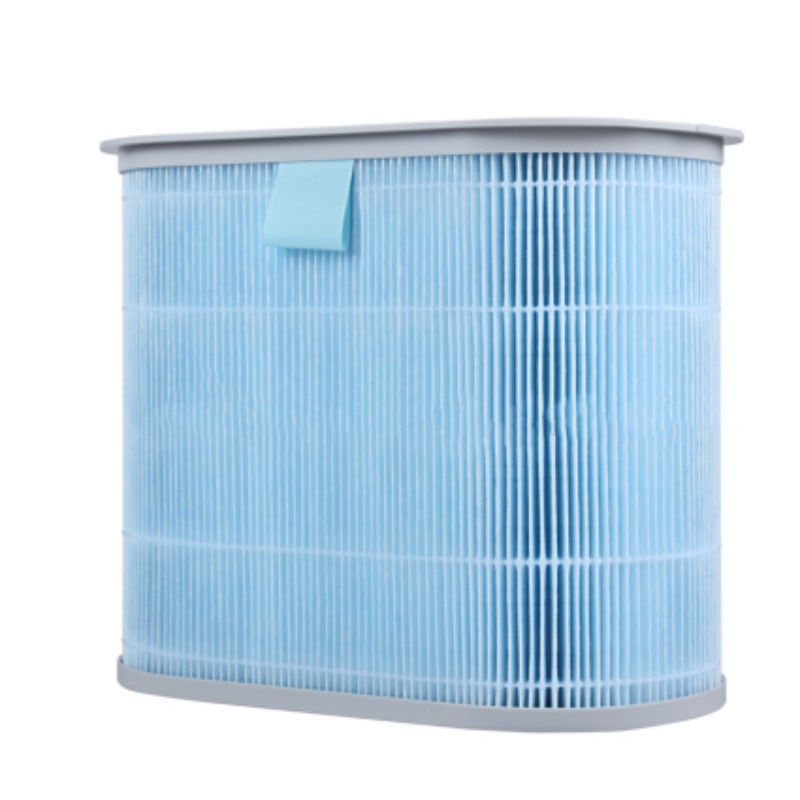Cleanrooms are critical in industries where even microscopic contaminants can compromise product quality or safety. High-Efficiency Particulate Air (HEPA) cylinder filters play a pivotal role in maintaining the stringent air purity standards required in these environments. These Filters are designed to capture particles as small as 0.3 microns with an efficiency of 99.97%, ensuring compliance with ISO Class 1 to Class 9 cleanroom classifications. Their cylindrical design maximizes surface area, enhancing airflow while minimizing pressure drop—typically below 250 Pa at rated airflow conditions. This article explores the technical specifications, applications, and maintenance protocols for Hepa Cylinder Filters in cleanroom settings.

HEPA cylinder filters meet the stringent requirements of EN 1822 and IEST-RP-CC001 standards, capturing 99.97% of particles ≥0.3 microns. Advanced ULPA variants extend this to 99.999% efficiency for particles ≥0.12 microns, critical for semiconductor fabrication (ISO Class 3-5 cleanrooms). Testing with Di-Ethyl-Hexyl-Sebacate (DEHS) or Poly-Alpha-Olefin (PAO) aerosols confirms their performance under MIL-STD-282 protocols.
The pleated cylindrical geometry provides 30-50% more filter media surface area than flat panels, reducing velocity to <0.45 m/s for minimal particle re-entrainment. Computational Fluid Dynamics (CFD) modeling shows this design maintains uniform airflow (±15% deviation) critical for unidirectional flow in vertical laminar flow hoods.
Constructed with borosilicate microglass media bonded to aluminum or stainless steel frames (316L grade for pharmaceutical use), these filters withstand 2,500 Pa burst pressure—exceeding ASME AG-1 Section FC requirements. Vibration testing per ISO 14644-3 demonstrates <0.1% media damage after 5 million cycles at 50Hz.
Filters with fluorocarbon-coated media (e.g., PTFE) resist corrosive gases like hydrogen fluoride (up to 100 ppm exposure), making them suitable for chemical processing cleanrooms. Gamma-irradiated variants (25-50 kGy dose) meet USP <797> standards for sterile compounding.
In aseptic filling lines (EU GMP Grade A/B), HEPA cylinders maintain ≤3,520 particles/m³ for ≥0.5μm particles. Their 360° filtration prevents dead zones in RABS (Restricted Access Barrier Systems), with in-situ leak testing via photometers showing <0.01% penetration.
For EUV lithography cleanrooms (Class ISO 1), ULPA-grade cylinders with conductive frames (<1x10⁹ ohms) prevent electrostatic discharge. Particle counts remain below 1 particle/ft³ at 0.1μm per SEMI F21-1102.
In BSL-3/4 facilities, HEPA cylinders with bag-in/bag-out housings (per NSF/ANSI 49) contain pathogens during filter changes. Pressure decay tests verify <0.5% bypass leakage at 1,000 Pa.
Cleanrooms for implant manufacturing use FDA 21 CFR 820-compliant filters with DOC (Differential Pressure vs. Operating Time) curves showing <10% efficiency loss after 5 years at 24/7 operation.
Install differential pressure gauges (0-500 Pa range, ±1% accuracy) upstream/downstream. Replace filters when ΔP exceeds initial value by 2x (typically 3-5 years). Continuous monitoring with IoT sensors can predict failures via machine learning algorithms analyzing pressure trends.
Conduct annual DOP (Dioctyl Phthalate) or MPPS (Most Penetrating Particle Size) testing per IEST-RP-CC034. Use aerosol photometers calibrated to 0.001% sensitivity. For ISO Class 5+ cleanrooms, perform 6-month scans with 0.3μm challenge particles.
Follow ISO 14644-7 for containment during change-outs. For hazardous applications, use bag-in/bag-out systems maintaining <0.01% containment loss. Torque frame bolts to 2.5 N·m ±10% to prevent gasket compression leaks.
Surface clean non-shedding HEPA housings quarterly with IPA (70% isopropyl alcohol) and lint-free wipes. For biological contaminants, use sporicidal agents (e.g., hydrogen peroxide vapor) compatible with filter media. Never wash HEPA media directly—this damages the fiber matrix.
HEPA cylinder filters represent a sophisticated fusion of materials science and fluid dynamics, delivering unparalleled air purification for mission-critical environments. Their evolving designs—now incorporating features like nanofiber coatings and smart pressure sensors—continue to push the boundaries of contamination control. By adhering to rigorous maintenance schedules and understanding their performance characteristics, cleanroom operators can ensure these filters deliver their full potential in safeguarding product integrity and personnel safety.